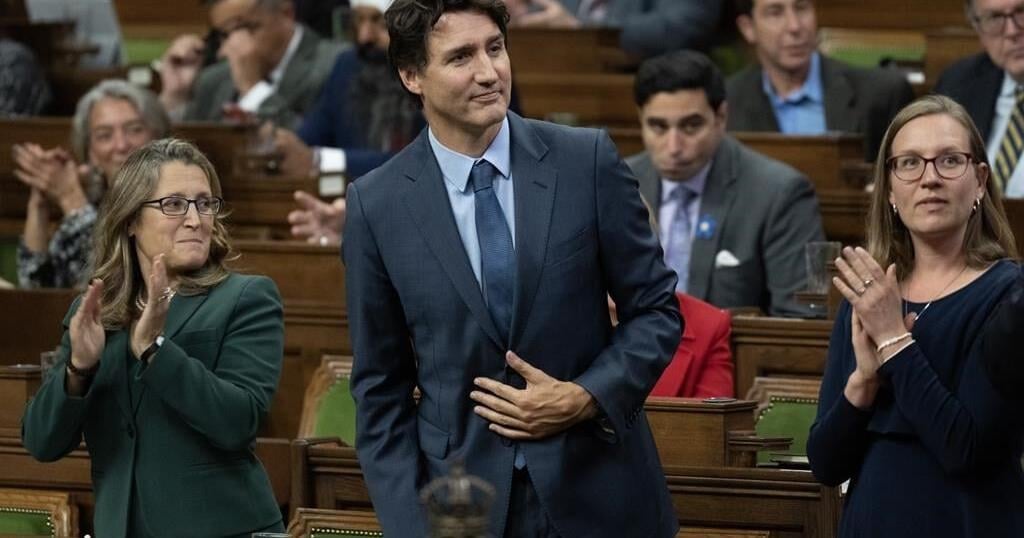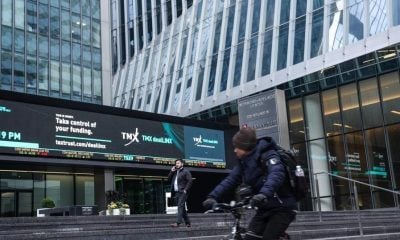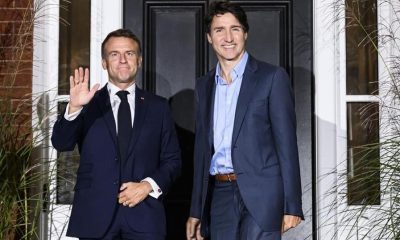When trying to interpret, understand, and analyze the daily flow of news, I tend to locate what is happening against the background of two distinctive but intersecting models of how capitalism works. The first level is a mapping of the internal contradictions of the circulation and accumulation of capital as money value flows in search of profit through the different “moments” (as Marx calls them) of production, realization (consumption), distribution, and reinvestment. This is a model of the capitalist economy as a spiral of endless expansion and growth. It gets pretty complicated as it gets elaborated through, for example, the lenses of geopolitical rivalries, uneven geographical developments, financial institutions, state policies, technological reconfigurations and the ever-changing web of divisions of labor and of social relations.
I envision this model as embedded, however, in a broader context of social reproduction (in households and communities), in an ongoing and ever-evolving metabolic relation to nature (including the “second nature” of urbanization and the built environment) and all manner of cultural, scientific (knowledge-based), religious, and contingent social formations that human populations typically create across space and time. These latter “moments” incorporate the active expression of human wants, needs, and desires, the lust for knowledge and meaning and the evolving quest for fulfillment against a background of changing institutional arrangements, political contestations, ideological confrontations, losses, defeats, frustrations, and alienations, all worked out in a world of marked geographical, cultural, social, and political diversity. This second model constitutes, as it were, my working understanding of global capitalism as a distinctive social formation, whereas the first is about the contradictions within the economic engine that powers this social formation along certain pathways of its historical and geographical evolution.
Spiraling
When on January 26, 2020 I first read of a coronavirus that was gaining ground in China, I immediately thought of the repercussions for the global dynamics of capital accumulation. I knew from my studies of the economic model that blockages and disruptions in the continuity of capital flow would result in devaluations and that if devaluations became widespread and deep that would signal the onset of crises. I was also well aware that China is the second-largest economy in the world and that it had effectively bailed out global capitalism in the aftermath of 2007–8, so any hit upon China’s economy was bound to have serious consequences for a global economy that was in any case already in a parlous condition. The existing model of capital accumulation was, it seemed to me, already in a lot of trouble. Protest movements were occurring almost everywhere (from Santiago to Beirut), many of which were focused on the fact that the dominant economic model was not working well for the mass of the population. This neoliberal model is increasingly resting on fictitious capital and a vast expansion in the money supply and debt creation. It is already facing the problem of insufficient effective demand to realize the values that capital is capable of producing. So how might the dominant economic model, with its sagging legitimacy and delicate health, absorb and survive the inevitable impacts of what might become a pandemic? The answer depended heavily on how long the disruption might last and spread, for as Marx pointed out, devaluation does not occur because commodities cannot be sold but because they cannot be sold in time.
I had long refused the idea of “nature” as outside of and separate from culture, economy, and daily life. I take a more dialectical and relational view of the metabolic relation to nature. Capital modifies the environmental conditions of its own reproduction but does so in a context of unintended consequences (like climate change) and against the background of autonomous and independent evolutionary forces that are perpetually reshaping environmental conditions. There is, from this standpoint, no such thing as a truly natural disaster. Viruses mutate all the time to be sure. But the circumstances in which a mutation becomes life-threatening depend on human actions.
There are two relevant aspects to this. First, favorable environmental conditions increase the probability of vigorous mutations. It is, for example, plausible to expect that intensive or wayward food supply systems in the humid subtropics may contribute to this. Such systems exist in many places, including China south of the Yangtse and Southeast Asia. Secondly, the conditions that favor rapid transmission through host bodies vary greatly. High-density human populations would seem an easy host target. It is well known that measles epidemics, for example, only flourish in larger urban population centers but rapidly die out in sparsely populated regions. How human beings interact with each other, move around, discipline themselves, or forget to wash their hands affects how diseases get transmitted. In recent times SARS, bird, and swine flu appear to have come out of China or Southeast Asia. China has suffered heavily also from swine fever in the past year, entailing the mass slaughter of pigs and escalating pork prices. I do not say all this to indict China. There are plenty of other places where environmental risks for viral mutation and diffusion are high. The Spanish Flu of 1918 may have come out of Kansas and Africa may have incubated HIV/AIDS and certainly initiated West Nile and Ebola, while dengue seems to flourish in Latin America. But the economic and demographic impacts of the spread of the virus depend upon preexisting cracks and vulnerabilities in the hegemonic economic model.
I was not unduly surprised that COVID-19 was initially found in Wuhan (though whether it originated there is not known). Plainly the local effects would be substantial and given this was a serious production center there would likely be global economic repercussions (though I had no idea of the magnitude). The big question was how the contagion and diffusion might occur and how long it would last (until a vaccine could be found). Earlier experience had shown that one of the downsides of increasing globalization is how impossible it is to stop a rapid international diffusion of new diseases. We live in a highly connected world where almost everyone travels. The human networks for potential diffusion are vast and open. The danger (economic and demographic) was that the disruption would last a year or more.
While there was an immediate downturn in global stock markets when the initial news broke, it was surprisingly followed by a month or more when the markets hit new highs. The news seemed to indicate business as normal everywhere except in China. The belief seemed to be that we were going to experience a rerun of SARS which turned out to be fairly quickly contained and of low global impact even though it had a high death rate and created an unnecessary (in retrospect) panic in financial markets. When COVID-19 appeared, a dominant reaction was to depict it as a SARS repeat, rendering the panic redundant. The fact that the epidemic raged in China, which quickly and ruthlessly moved to contain its impacts also led the rest of the world to erroneously treat the problem as something going on “over there” and therefore out of sight and mind (accompanied by some troubling signs of anti-Chinese xenophobia in certain parts of the world). The spike which the virus put into the otherwise triumphant China growth story was even greeted with glee in certain circles of the Trump administration.
However, stories of interruptions in global production chains that passed through Wuhan began to circulate. These were largely ignored or treated as problems for particular product lines or corporations (like Apple). Devaluations were local and particular and not systemic. The signs of falling consumer demand were also minimized, even though those corporations, like McDonald’s and Starbucks, that had large operations inside the Chinese domestic market had to close their doors there for a while. The overlap of the Chinese New Year with the outbreak of the virus masked impacts throughout January. The complacency of this response was badly misplaced.
Initial news of the international spread of the virus was occasional and episodic with a serious outbreak in South Korea and a few other hotspots like Iran. It was the Italian outbreak which sparked the first violent reaction. The stock market crash beginning in mid-February oscillated somewhat but by mid-March had led to a net devaluation of almost 30 percent on stock markets worldwide.
The exponential escalation of the infections elicited a range of often incoherent and sometimes panic-stricken responses. President Trump performed an imitation of King Canute in the face of a potential rising tide of illnesses and deaths. Some of the responses have been passing strange. Having the Federal Reserve lower interest rates in the face of a virus seemed weird, even when it was recognized that the move was meant to alleviate market impacts rather than to stem the progress of the virus.
Public authorities and health care systems were almost everywhere caught short-handed. Forty years of neoliberalism across North and South America and Europe had left the public totally exposed and ill-prepared to face a public health crisis of this sort, even though previous scares of SARS and Ebola provided abundant warnings as well as cogent lessons as to what would be needed to be done. In many parts of the supposed “civilized” world, local governments and regional/state authorities, which invariably form the front line of defense in public health and safety emergencies of this kind, had been starved of funding thanks to a policy of austerity designed to fund tax cuts and subsidies to the corporations and the rich.
Corporatist Big Pharma has little or no interest in non-remunerative research on infectious diseases (such as the whole class of coronaviruses that have been well-known since the 1960s). Big Pharma rarely invests in prevention. It has little interest in investing in preparedness for a public health crisis. It loves to design cures. The sicker we are, the more they earn. Prevention does not contribute to shareholder value. The business model applied to public health provision eliminated the surplus coping capacities that would be required in an emergency. Prevention was not even an enticing enough field of work to warrant public-private partnerships. President Trump had cut the budget of the Center for Disease Control and disbanded the working group on pandemics in the National Security Council in the same spirit as he cut all research funding, including on climate change. If I wanted to be anthropomorphic and metaphorical about this, I would conclude that COVID-19 is nature’s revenge for over forty years of nature’s gross and abusive mistreatment at the hands of a violent and unregulated neoliberal extractivism.
It is perhaps symptomatic that the least neoliberal countries, China and South Korea, Taiwan, and Singapore, have so far come through the pandemic in better shape than Italy, though Iran will bely this argument as a universal principle. While there was a lot of evidence that China handled SARS rather badly with a lot of initial dissembling and denial, this time around President Xi quickly moved to mandate transparency both in reporting and testing, as did South Korea. Even so, in China some valuable time was lost (just a few days make all the difference). What was remarkable in China, however, was the confinement of the epidemic to Hubei Province with Wuhan at its center. The epidemic did not move to Beijing or to the West or even further South. The measures taken to confine the virus geographically were draconian. They would be almost impossible to replicate elsewhere for political, economic, and cultural reasons. Reports coming out of China suggest the treatments and the policies were anything but caring. Furthermore, China and Singapore deployed their powers of personal surveillance to levels that were invasive and authoritarian. But they seem to have been extremely effective in aggregate, though had the counter actions been set in motion just a few days earlier, models suggest that many deaths might have been avoided. This is important information: in any exponential growth process there is an inflection point beyond which the rising mass gets totally out of control (note here, once more, the significance of the mass in relation to the rate). The fact that Trump dawdled for so many weeks may yet prove costly in human lives.
The economic effects are now spiraling out of control both within China and beyond. The disruptions working through the value chains of corporations and in certain sectors turned out to be more systemic and substantial than was originally thought. The long-term effect may be to shorten or diversify the supply chains while moving towards less labor-intensive forms of production (with enormous implications for employment) and greater reliance on artificial-intelligent production systems. The disruption of production chains entails laying off or furloughing workers, which diminishes final demand, while the demand for raw materials diminishes productive consumption. These impacts on the demand side would in their own right have produced at least a mild recession.
But the biggest vulnerabilities existed elsewhere. The modes of consumerism which exploded after 2007–8 have crashed with devastating consequences. These modes were based on reducing the turnover time of consumption as close as possible to zero. The flood of investments into such forms of consumerism had everything to do with maximum absorption of exponentially increasing volumes of capital in forms of consumerism that had the shortest possible turnover time. International tourism was emblematic. International visits increased from 800 million to 1.4 billion between 2010 and 2018. This form of instantaneous consumerism required massive infrastructural investments in airports and airlines, hotels and restaurants, theme parks and cultural events, etc. This site of capital accumulation is now dead in the water: airlines are close to bankruptcy, hotels are empty, and mass unemployment in the hospitality industries is imminent. Eating out is not a good idea and restaurants and bars have been closed in many places. Even takeout appears risky. The vast army of workers in the gig economy or in other forms of precarious work is being laid off with no visible means of support. Events such as cultural festivals, soccer and basketball tournaments, concerts, business and professional conventions, and even political gatherings around elections are cancelled. These “event based” forms of experiential consumerism have been closed down. The revenues of local governments have cratered. Universities and schools are closing down.
Much of the cutting-edge model of contemporary capitalist consumerism is inoperable under present conditions. The drive towards what André Gorz describes as “compensatory consumerism” (in which alienated workers are supposed to recover their spirits through a package holiday on a tropical beach) was blunted.
But contemporary capitalist economies are 70 or even 80 percent driven by consumerism. Consumer confidence and sentiment has over the past forty years become the key to the mobilization of effective demand and capital has become increasingly demand- and needs-driven. This source of economic energy has not been subject to wild fluctuations (with a few exceptions such as the Icelandic volcanic eruption that blocked trans-Atlantic flights for a couple of weeks). But COVID-19 is underpinning not a wild fluctuation but an almighty crash in the heart of the form of consumerism that dominates in the most affluent countries. The spiral form of endless capital accumulation is collapsing inward from one part of the world to every other. The only thing that can save it is a government funded and inspired mass consumerism conjured out of nothing. This will require socializing the whole of the economy in the United States, for example, without calling it socialism.
The Front Lines
There is a convenient myth that infectious diseases do not acknowledge class or other social barriers and boundaries. Like many such sayings, there is a certain truth to this. In the cholera epidemics of the nineteenth century, the transcendence of barriers of class was sufficiently dramatic as to spawn the birth of a public sanitation and health movement (which became professionalized) that has lasted to this day. Whether this movement was designed to protect everyone or just the upper classes was not always clear. But today the differential class and social effects and impacts tell a different story. The economic and social impacts are filtered through “customary” discriminations that are everywhere in evidence. To begin with, the workforce that is expected to take care of the mounting numbers of the sick is typically highly gendered, racialized, and ethnicized in most parts of the world. It mirrors the class-based workforces to be found in, for example, airports and other logistical sectors.
This “new working class” is in the forefront and bears the brunt of either being the workforce most at risk from contracting the virus through their jobs or of being laid off with no resources because of the economic retrenchment enforced by the virus. There is, for example, the question of who can work at home and who cannot. This sharpens the societal divide as does the question of who can afford to isolate or quarantine themselves (with or without pay) in the event of contact or infection. In exactly the same way that I learned to call the Nicaraguan (1973) and Mexico City (1995) earthquakes “class-quakes,” so the progress of COVID-19 exhibits all the characteristics of a class, gendered, and racialized pandemic. While efforts at mitigation are conveniently cloaked in the rhetoric that “we are all in this together,” the practices, particularly on the part of national governments, suggest more sinister motivations. The contemporary working class in the United States (comprised predominantly of African Americans, Latinx, and waged women) faces the ugly choice of contamination in the name of caring and keeping key features of provision (like grocery stores) open or unemployment with no benefits (such as adequate health care). Salaried personnel (like me) work from home and draw their pay just as before while CEOs fly around in private jets and helicopters.
Workforces in most parts of the world have long been socialized to behave as good neoliberal subjects (which means blaming themselves or God if anything goes wrong but never daring to suggest capitalism might be the problem). But even good neoliberal subjects can see that there is something wrong with the way this pandemic is being responded to.
The big question is: how long will this go on? It could be more than a year and the longer it goes on, the more the devaluation, including of the labor force. Unemployment levels will almost certainly rise to levels comparable to the 1930s in the absence of massive state interventions that will have to go against the neoliberal grain. The immediate ramifications for the economy as well as for social daily life are multiple. But they are not all bad. To the degree that contemporary consumerism was becoming excessive it was verging on what Marx described as “overconsumption and insane consumption, signifying, by its turn to the monstrous and the bizarre, the downfall” of the whole system. The recklessness of this overconsumption has played a major role in environmental degradation. The cancellation of airline flights and radical curbing of transportation and movement has had positive consequence with respect to greenhouse gas emissions. Air quality in Wuhan is much improved, as it also is in many US cities. Ecotourist sites will have a time to recover from trampling feet. The swans have returned to the canals of Venice. To the degree that the taste for reckless and senseless overconsumerism is curbed, there could be some long-term benefits. Fewer deaths on Mount Everest could be a good thing. And while no one says it out loud, the demographic bias of the virus may end up affecting age pyramids with long-term effects on Social Security burdens and the future of the “care industry.” Daily life will slow down and, for some people, that will be a blessing. The suggested rules of social distancing could, if the emergency goes on long enough, lead to cultural shifts. The only form of consumerism that will almost certainly benefit is what I call the “Netflix” economy, which caters to “binge watchers” anyways.
On the economic front, responses have been conditioned by the manner of exodus from the crash of 2007–8. This entailed an ultra-loose monetary policy coupled with bailing out the banks, supplemented by a dramatic increase in productive consumption by a massive expansion of infrastructural investment in China. The latter cannot be repeated on the scale required. The bailout packages set up in 2008 focused on the banks but also entailed the de facto nationalization of General Motors. It is perhaps significant that in the face of worker discontents and collapsing market demand, the three big Detroit auto companies are closing down, at least temporarily.
If China cannot repeat its 2007–8 role, then the burden of exiting from the current economic crisis now shifts to the United States and here is the ultimate irony: the only policies that will work, both economically and politically, are far more socialistic than anything that Bernie Sanders might propose and these rescue programs will have to be initiated under the aegis of Donald Trump, presumably under the mask of Making America Great Again.
All those Republicans who so viscerally opposed the 2008 bailout will have to eat crow or defy Donald Trump. The latter, if he is wise, will cancel the elections on an emergency basis and declare the origin of an imperial presidency to save capital and the world from “riot and revolution.”

































